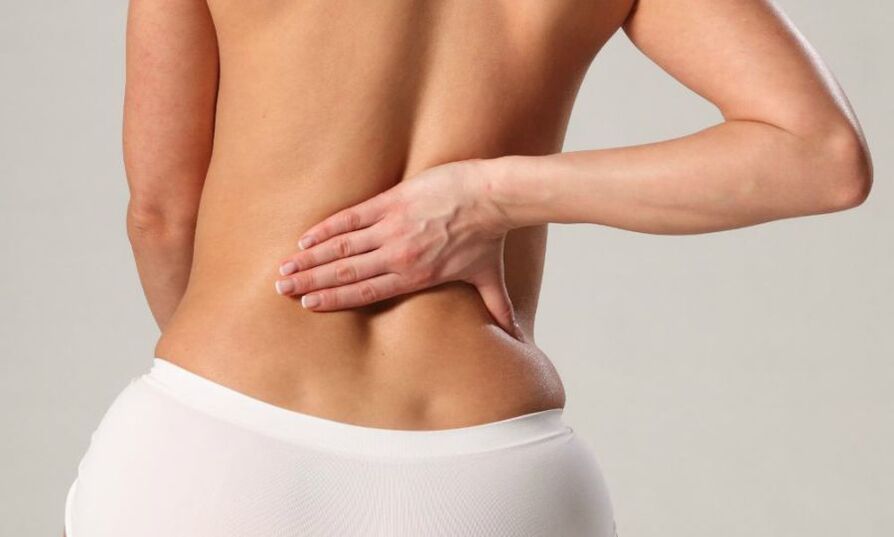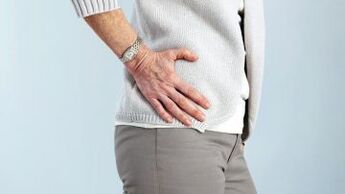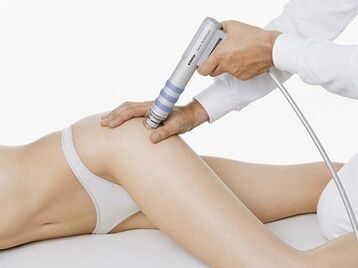Hip osteoarthritis is a complex pathology with dangerous health consequences.
To slow its progression and deal with dangerous symptoms, you need to see your doctor promptly. A specialist will make the correct diagnosis and choose the appropriate treatment.
Clinical manifestations and pathological classification

The pathology is progressive in nature and is accompanied by destruction of the bone and cartilage of the hip joint. In medicine, this condition is often referred to as hip disease. It is classified in ICD-10 with code M16.
Most of the time, the pathology occurs in people over the age of 40, and women are more susceptible.
In older adults, the disease is associated with the body's natural aging. In young adults, disease development may be due to trauma, excess body weight, and increased physical activity.
In the initial stages of the disease, periodic pain occurs in the joint area. Without proper treatment, the disease can progress, which can lead to disability.
Causes and Predisposing Factors
Pathology develops gradually and is associated with multiple factors. The following factors lead to the appearance of the disease:
- Hormone imbalance - may have age or pathological features.
- Violation of blood flow - occurs due to injury, increased physical exertion, vascular lesions.
- Inflammation - Arthritis can be observed.
- Overweight - Increased load on the hip can cause it to be compressed and destroyed.
- Genetic Predisposition - Diseases of the structure of the femoral head often lead to arthropathy.
- Increased physical activity - rarely causes arthropathy, but can hasten the onset of disease due to other adverse factors.
- Trauma - including sprains, fractures, dislocations.
Stages and Types of Arthropathy

There are several stages in the development of pathology:
- Stage 1 - During this stage, uncomfortable sensations appear periodically. The stimulus is prolonged physical activity. After a short rest, the discomfort will subside.
- Stage 2 - Increased hip pain, affecting the groin and thighs. Discomfort can also occur during rest. Limping occurs after prolonged exercise. During this phase, the function of the joint is affected and its motor activity is reduced. Contractures develop gradually, and strength and muscle mass decrease.
- Stage 3 - Pain syndrome is permanent and occurs even at night. Walking without crutches is very difficult. Movement is disrupted and severely restricted, with muscle atrophy in the hips, thighs, and calves. When moving, a person must lean on the toes and lean to the damaged side.
- Stage 4 - During this stage, the hip joint loses motor activity completely.
Symptoms and manifestations
With the development of this type of arthropathy, the following manifestations appear:
- Severe pain in the affected joint and knee area. Also, discomfort in the groin may occur. The pain is always there. As the disease progresses, it can affect the legs.
- Violation of athletic activity. Extreme pain syndrome can disrupt a person's ability to move around. In this case, he must use crutches or crutches.
- The affected limb is shortened.
- lame.
- Tightening of the joints occurs with any movement.
- Movement is stiff.
- Muscular tissue atrophy in the thigh area - detected by X-ray.
Diagnosis of the hip joint

In making a diagnosis, physicians take into account the clinical presentation of the pathology, the medical history, the patient's external examination findings, and instrumental studies.
To make an accurate diagnosis, do the following research:
- Analysis of patient complaints and external inspections of damaged areas.
- X-ray - with its help, the size of the joint space, bone growth, etc. can be identified.
- Ultrasound program.
- blood test.
- Magnetic resonance imaging.
If necessary, use arthroscopic instruments to examine the inner surface of the joint. Differential diagnosis is made to exclude knee arthropathy, lumbosacral, or thoracic osteochondrosis. Joint pain can be disguised as a clinical manifestation of radiculopathy caused by nerve root compression or inflammation. Neurogenic pathology can usually be ruled out with the help of some tests. Hip arthropathy must be distinguished from trochanteric bursitis of the hip, Bechterew's disease, and reactive arthritis. To rule out autoimmune lesions, biochemical studies of blood and synovial fluid were performed.
treat
In order to cope with arthropathy of the hip joint, it is necessary to choose a combination therapy.
General advice on daily life and nutrition
In the early stages of pathology, doctors recommend lifestyle adjustments. This will help stop the pain and stop the progression of the disease. At this stage, lifestyle modification and adherence to a special diet are usually sufficient.
Doctors recommend special physical activity for patients. Equally important are dietary corrections. If you are overweight, you should definitely lose weight. Increased pressure on the joints will not eliminate arthropathy.
The basis of the diet should be fish. Also eat lean meats, beans, green vegetables, and coarse bread. At the same time, it is recommended to abandon fried food and fast food. You need to eat in portions, small portions.
Conservative treatment

Medical care aims to address the following issues:
- relief the pain;
- normalization of tissue nutrition;
- stimulate the regeneration process;
- improve blood flow;
- reduce stress on damaged areas;
- Joint space is enlarged.
To solve these problems, you need to use the following types of medicines:
- Non-steroidal anti-inflammatory drugs. These drugs can relieve pain and inflammation. However, they were unable to restore the affected cartilage.
- chondroprotective agent. They provide nutrients to tissues and stop the destruction of joints, thereby helping to restore their function.
- Muscle relaxant. With the help of these funds, spasms in muscle tissue can be eliminated and blood flow in the tissue can be normalized.
- Creams and ointments. These funds activate blood flow and relieve spasms.
- Steroids. These drugs are injected into the joint cavity. Therefore, it is possible to cope with the exacerbation of the disease and eliminate the severe pain.
- Vasodilator. They aid in the expansion of blood vessels in the joints and supply tissues with useful substances.
Folk and alternative means
In addition to standard therapy, you can use the following tools:
- Oral tinctures and decoctions. The basis of such funds can be lemons, mummies, honey, medicinal plants.
- Ointment from natural ingredients. For their preparation, you can use eucalyptus oil, aloe vera, celandine.
- Bath and compress. To stop the symptoms of joint disease, compresses based on cabbage leaves and baths with Jerusalem artichoke can be used.
physiotherapy

During the remission phase, active use of physical therapy:
- Shockwave Therapy - In this condition, the body is subjected to sound waves that provide blood flow to the desired area. This improves the regeneration process of the dermis and stimulates the metabolic process.
- Muscle Stimulation - Helps restore the function of muscle tissue weakened by a forced reduction in motor activity.
- Ultrasound introduction - under the influence of a special device, a special drug in the form of an ointment or cream is injected into the affected area.
- Ozone therapy - reduces discomfort and activates cartilage development. This effect is achieved due to the influence of the ozone-oxygen composition.
Surgical methods

Surgery was prescribed because conservative treatment was ineffective:
- Puncture - is the extraction of excess fluid from the joint. Thus, pain can be stopped and physical activity normalized.
- Arthroscopic debridement - involves cleaning the inner articular surface from the cartilage elements and washing the cavity with a special solution.
- Periarticular osteotomy - is an artificial fracture of the femur. Afterwards, splicing at different angles minimizes the load on the joint.
- Endoprosthesis - In this case, the entire joint is replaced by a prosthesis.
Restoring cartilage tissue in a damaged joint is not possible without prosthetic surgery, but with correct treatment, compliance with all medical prescriptions, maintaining a correct lifestyle, engaging in therapeutic exercise, regular massage sessions, taking vitamins and appropriateNutrition, you can stop the process of damage and destruction of cartilage and hip joints.
Orthopedic Supplies
Canes can be used to relieve pressure on the hip joints. In some cases, people are advised to use crutches.
Many times, people with this diagnosis are advised to wear a soft bandage. Using orthoses can help reduce the load on the affected area, prevent it from dislocating and reduce physical activity.
Effect
In the most difficult cases, a person becomes disabled and completely incapacitated to lead an active lifestyle. This condition is very dangerous for the elderly. If you don't help a person, his life expectancy is greatly shortened.

forecast
Pathology has a good prognosis for life. In addition, the disease usually develops slowly. However, in some cases, there is a risk of aseptic necrosis of the femur, which can be life-threatening.
Hip arthropathy is a serious condition that can lead to complete loss of motor activity. To avoid this, you need to consult your doctor promptly and strictly follow his advice.



















